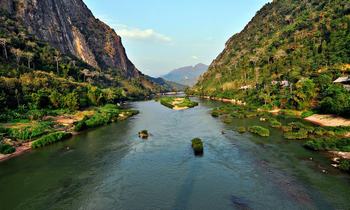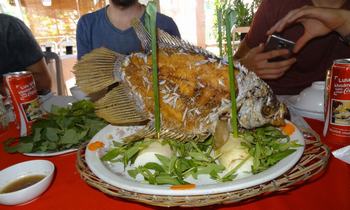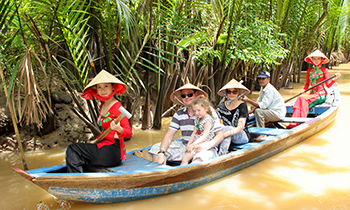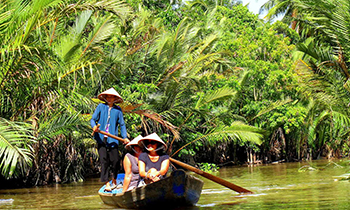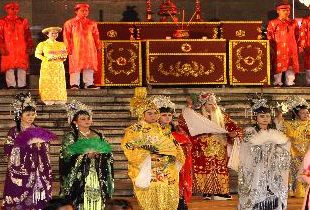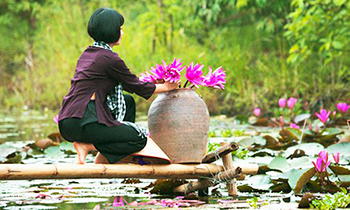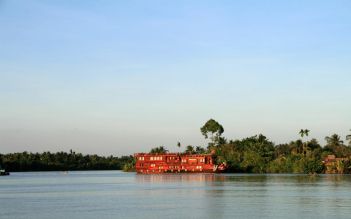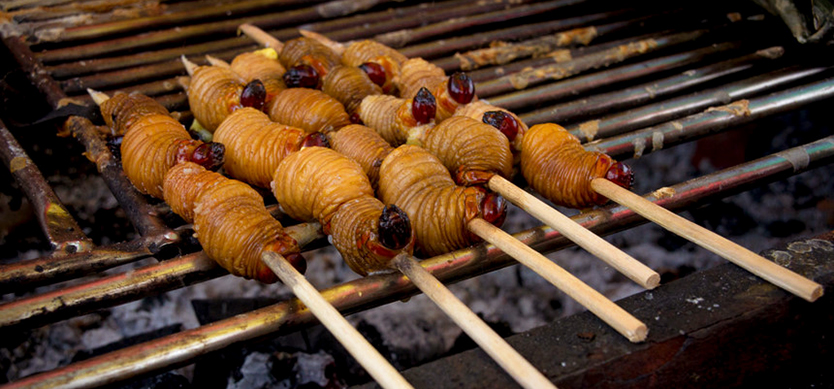
Grilled Larva
Traveling to Mekong Delta, tourists will explore various characteristics of the river region, of which “duong”, or larva, is a relative horror yet interesting specialty.
For many people, looking at the big larvae as the fingers wiggling is very horror. However, for Southwest people, it is a gift of nature, a specialty that is not always available. In the Mekong Delta, “duong” is most abundant in Ben Tre, where there are vast coconut forests. Although it is a harmful object damaging the coconut trees, “duong” is a source of raw materials to make many delicious and fatty dishes.
A special dish of Southern people
"Duong” is the larva of beetles, often live in the inside top soft part of areca species trees. They can be found in Mekong Delta, especially in Ben Tre province. This kind of larva is keen on eating the cotyledons inside the top of the coconut tree. There is a legend that this Southern grilled larva was the tribute to Nguyen Dynasty under Tu Du Queen Mother and Nam Phuong Queen.
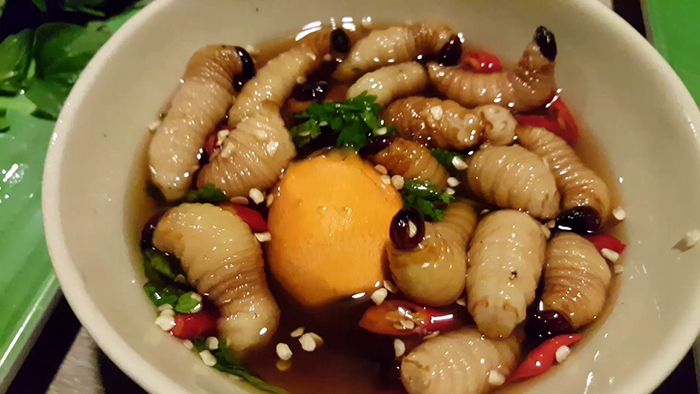
Live larvae served with chili sauce
Every year, after mating season, the beetles choose a healthy coconut tree, pierce a hole and lay eggs. Larvae are hatched from those eggs, staying inside the top of a coconut tree and eat the inside. Normally, there are about 100 larvae in each coconut trees. They will make the tree die gradually. The owner has to chop the body of the coconut tree to find the larvae. Each larva is as big as a human being’s thumb.
Previously, “duong” is a popular dish. However, it has nowadays been valuable, rare, and expensive. The reason is that it is difficult to find the larva. Even old farmers who have been working on the farm for ages can only enjoy this dish two or three times in their lives.
How to process larva
To make grilled larva, use two bars of bamboo to clamp the larvae. The bar of larvae then will be grilled on firing coal with frequent turning up and down. Keep grilling the bar until the larvae are all well cooked. Untie the bars, and put larvae on a plate. Take tamarind and bury it in the firing coal to make it cooked. Then peel the covering of tamarind, put it in a bowl and pour some fish sauce, sugar, and monosodium glutamate in. The tamarind fish sauce is now ready. Enjoy the grilled with this fish sauce mixture.
Grilled larvae are eaten with lettuce, cabbage, basil, balm-mint, and chili. Cover a grill larva by vegetable and eat with tamarind fish sauce. Enjoy the sweetness of the vegetable, fragrance of grilled larvae, sourness of tamarind fish sauce, and the pungency of chili. Although this dish is popular, many other delicate dishes cannot be as that tasty. Drink some soft wine or alcohol.
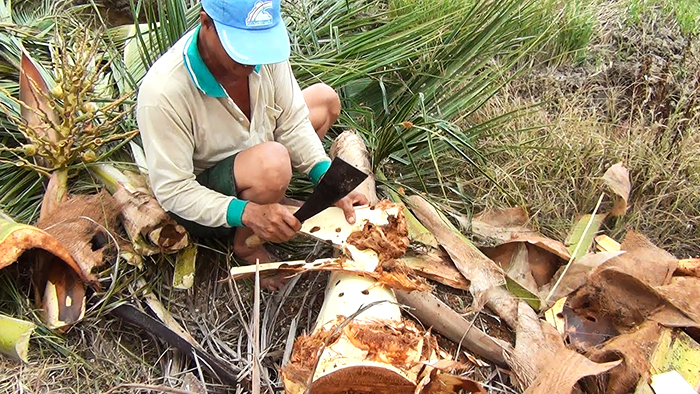
People catch larvae inside the coconut trees
There is another way of cooking larvae. They are buried in fish sauce for a while. Then cover with wheat flour before being fried. Eating with lettuce and tomato. Moreover, the live larva served with chili sauce is favored by many people. The live larvae are put into a bowl of wine so that they will release dirt. Then wash and put them in a cup of chili fish sauce to enjoy the dish.
The most unique dish is the steaming larva with sticky rice. When the sticky rice is about to be well done, put the larvae on small banana leaves and place it on the sticky rice surface to keep steaming. The dish is very limber, soft, and fatty.
Grilled larva, as well as many other dishes, is a strange specialty of Southwest people, reflecting their rustic and simple life sticking to nature. If you want to explore the unique culture here or enjoy the special dishes of local people, feel free to contact us or visit our website. Thank you and hope you will have a wonderful time with Mekong Delta tours.


